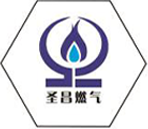
Aug . 14, 2024 05:01
Back to list
Design and Analysis of an Efficient Gas Heat Exchanger System for Enhanced Energy Recovery
Heat Exchanger for Gases An Overview
A heat exchanger is a critical component in many industrial processes, particularly those involving gases. Its primary function is to transfer heat from one fluid to another, often without the two fluids coming into direct contact. This heat transfer mechanism is essential in improving energy efficiency and optimizing processes in various applications such as power generation, chemical processing, and air conditioning systems.
Working Principle
The basic principle of heat exchangers relies on the laws of thermodynamics, particularly the transfer of heat from a hotter substance to a cooler one. When gases are involved, the design of the heat exchanger must accommodate their unique properties, such as low density and high diffusivity.
Typically, a heat exchanger for gases will use tubes or plates to create a barrier between the hot and cold gases. The hot gas flows through one set of passages, while the cold gas flows through another. As the two gases pass closely by each other, heat is transferred from the hot gas to the cold gas, leading to a temperature change in both streams. Efficiency is measured by how well the heat exchanger achieves this transfer compared to the possible maximum.
Types of Heat Exchangers
There are several types of heat exchangers suitable for gas applications, each with distinct advantages.
1. Shell and Tube Heat Exchangers This design consists of a series of tubes, one set carrying the hot gas and the other set carrying the cold gas. Its robust construction makes it ideal for high-pressure applications.
.
3. Air-Cooled Heat Exchangers Commonly used in HVAC systems, these heat exchangers utilize ambient air to cool or heat the gases, making them energy-efficient and environmentally friendly.
مبادل حراري للغاز

4. Double-Pipe Heat Exchangers A simpler design that involves two pipes, one inside the other. Hot gas flows through the inner pipe while cold gas flows around it in the outer pipe. They are relatively inexpensive and easy to maintain, but not as efficient as some of the more complex designs.
Applications in Industry
Heat exchangers for gas applications are used extensively in various industries. In the petrochemical industry, they play a vital role in keeping reactors at optimal temperatures. In power generation plants, they help in the efficient extraction of energy from combusted gases.
Furthermore, in the food processing industry, heat exchangers are employed to pasteurize gases used in various processes, ensuring product safety and quality. In the automotive industry, they are crucial in maintaining engine temperatures, contributing to overall vehicle performance and efficiency.
Challenges and Innovations
Despite their importance, gas heat exchangers face challenges, including fouling, corrosion, and efficiency loss over time. Advances in materials science and engineering are leading to the development of more durable and efficient heat exchangers that can withstand harsh conditions while minimizing energy loss.
Innovative designs, such as micro-channel heat exchangers, are emerging, which increase surface area and improve heat transfer rates. These innovations promise to enhance the performance and efficiency of heat exchangers in gas applications significantly.
Conclusion
Heat exchangers for gases are indispensable across numerous industries, enabling efficient heat transfer and energy conservation. As technological advancements continue to evolve, these systems will become even more efficient, sustainable, and integral to modern industrial processes. Investing in research and development in this field will undoubtedly lead to improved designs and operational efficiencies, benefiting both industries and the environment.
Latest news
-
Safety Valve Spring-Loaded Design Overpressure ProtectionNewsJul.25,2025
-
Precision Voltage Regulator AC5 Accuracy Grade PerformanceNewsJul.25,2025
-
Natural Gas Pressure Regulating Skid Industrial Pipeline ApplicationsNewsJul.25,2025
-
Natural Gas Filter Stainless Steel Mesh Element DesignNewsJul.25,2025
-
Gas Pressure Regulator Valve Direct-Acting Spring-Loaded DesignNewsJul.25,2025
-
Decompression Equipment Multi-Stage Heat Exchange System DesignNewsJul.25,2025

